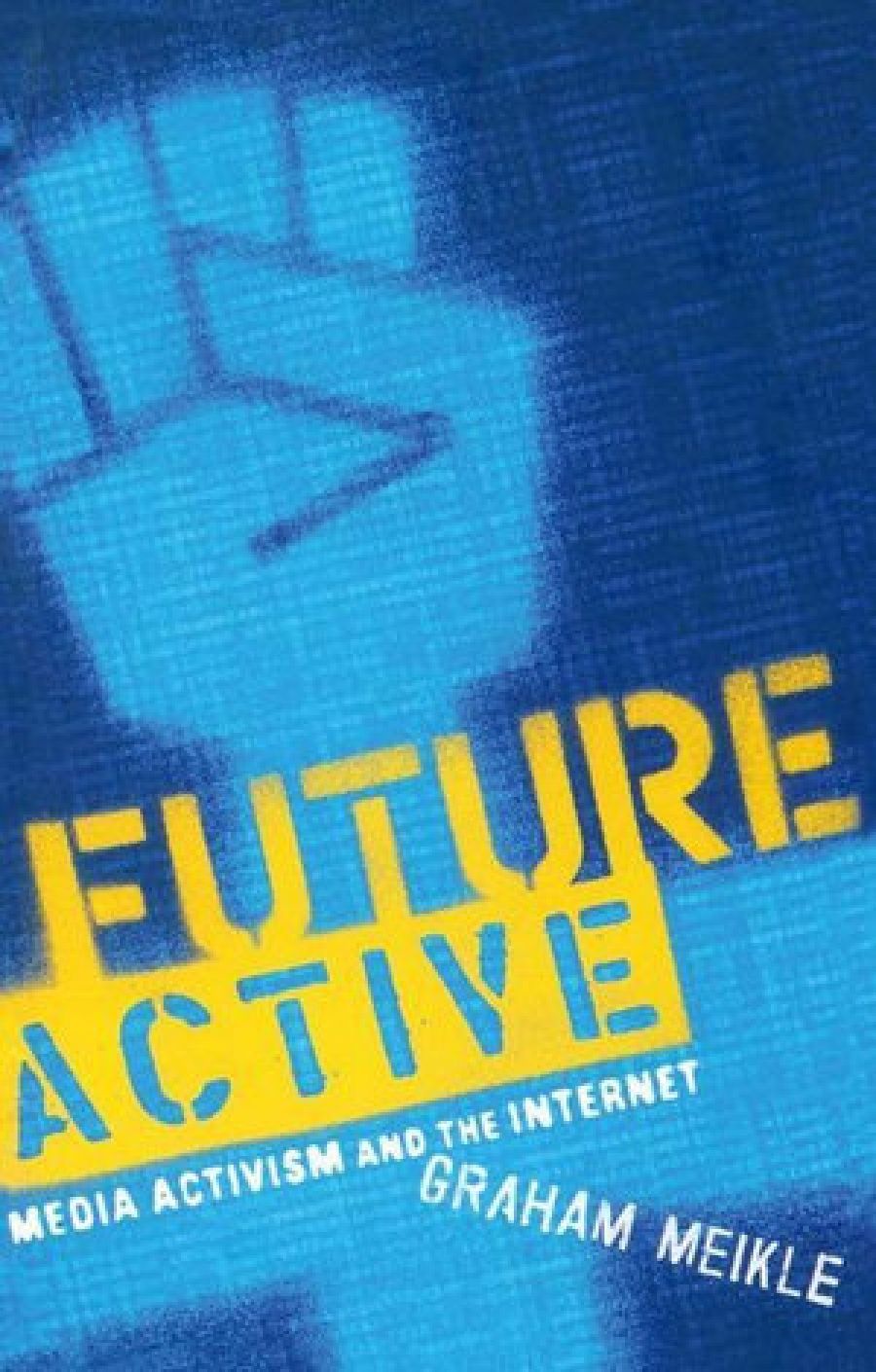
- Free Article: No
- Contents Category: Media
- Review Article: Yes
- Online Only: No
- Custom Highlight Text:
In Future Active, Graham Meikle roams the electronic landscape picking out highlights and lowlights. Like all travellers, what he finds is influenced by his interests and perspectives. Sometimes this leads to illuminating insights; sometimes I marvelled at what he might have seen but didn’t.
- Book 1 Title: Future Active
- Book 1 Subtitle: Media activism and the internet
- Book 1 Biblio: Pluto Press, $34.95pb, 225pp,
- Book 1 Readings Link: https://www.booktopia.com.au/future-active-graham-meikle/book/9780415943222.html
Meikle makes an important distinction at the beginning of the book. The Internet has two faces: an open system he refers to as Version 1.0; and a closed system, Version 2.0. Version 2.0 is globalised and corporatised; it ‘offers one-way information flows’ and consumer options presented as ‘choice’. Version 2.0 is concerned with shopping and provides no challenges to mainstream thinking; indeed, it limits them. Version 1.0, on the other hand, is open-ended and includes possibilities for change and debate.
Although, at face value, Version 1.0 seems to lend itself to progressive views, it has been used to support reactionary ones. Meikle cites the example of the Nuremburg Files: ‘an antiabortion site which encourages supporters to show how prolife they are by shooting doctors.’ In contrast, he examines how activists have used the Net to push repressive government activities into the global spotlight, including Huaren’s campaign to heighten awareness of discrimination against Chinese in Indonesia. Meikle also points out how, unsurprisingly, Net activism builds on pre-Net ways of using the media, and that the most effective campaigns use a mix of both the Internet and traditional media.
One of information technology’s problems is its tendency to disconnect rather than connect people. Meikle discusses how this occurs on the websites of political parties, where political participation is ‘reduced to making donations’ and citizenship is equated with consumption. This is reminiscent of Laura Bush’s recent injunction to American women to go shopping in order to show their patriotism.
One of the enduring problems for activists in terms of media response is whether a campaign will be noticed by the mainstream and adopted by the media marketplace. Take the recent case of Amina Lawal whose sentence of stoning to death for having a child outside of marriage has been upheld by the lower court in Nigeria. Petitions appealing to the Nigerian government to revoke the sentence have been doing the rounds on feminist email lists for some months. Similar petitions circulated about the ways in which the Taliban treated women, but it was only when it became useful to the US government that the mainstream media took notice of the Revolutionary Association of the Women of Afghanistan. This is precisely the problem. Activist campaigns are often pushing a line that is in opposition to the dominant culture, and it is rarely in the interest of the powerful to notice them. Alternative media can only go so far by getting likeminded people interested, informed and concerned. How to take the next step?
One option is to free up the computer programmes that are used to create the information. The Independent Media Centre movement (IMC), which was involved in coordinating the media around Seattle, has been heavily involved in this area. Originating in Sydney, it has a Version 1.0 philosophy that counters the privatisation of the Internet. Its philosophy is also optimistic: ‘If you provide a space … where people can be intelligent, imaginative and creative, they will be.’
Another option is for programmers to subvert the ways in which search engines reproduce power relations in the dominant culture. But research, too, reproduces such patterns. In an oversight, Meikle ignores how these issues impact on women. Donna Hughes, for example, has studied cyberprostitution while Genevieve Bell, an anthropologist working with Intel, points to the vast differences in the ways men and women use the Internet – in particular, men’s overwhelming use of pornographic sites.
Refreshingly, Meikle’s book does not perpetuate the electronic hype that promises that the Internet will deliver all things to at least some people. It certainly cannot deliver to all people while the gap between the rich and poor – both economically and informationally – remains as large as it is. But the electronic ‘revolution’ does not provide the same richness as real life, and it never will. It’s a pity that Meikle does not include the vibrant feminist scholarship on Net issues produced over the last decade or so. This is a significant gap in the book. Despite this, it is rewarding to find a book on the Internet concluding with a plea for us to retain a sense of humour, as well as a belief in imagination rather than consumer options. The book closes with the voices of activists who advise: ‘act tactically … think strategically …be clear about what you want … don’t have too much faith in the Net … but do have faith in yourselves.’


Comments powered by CComment